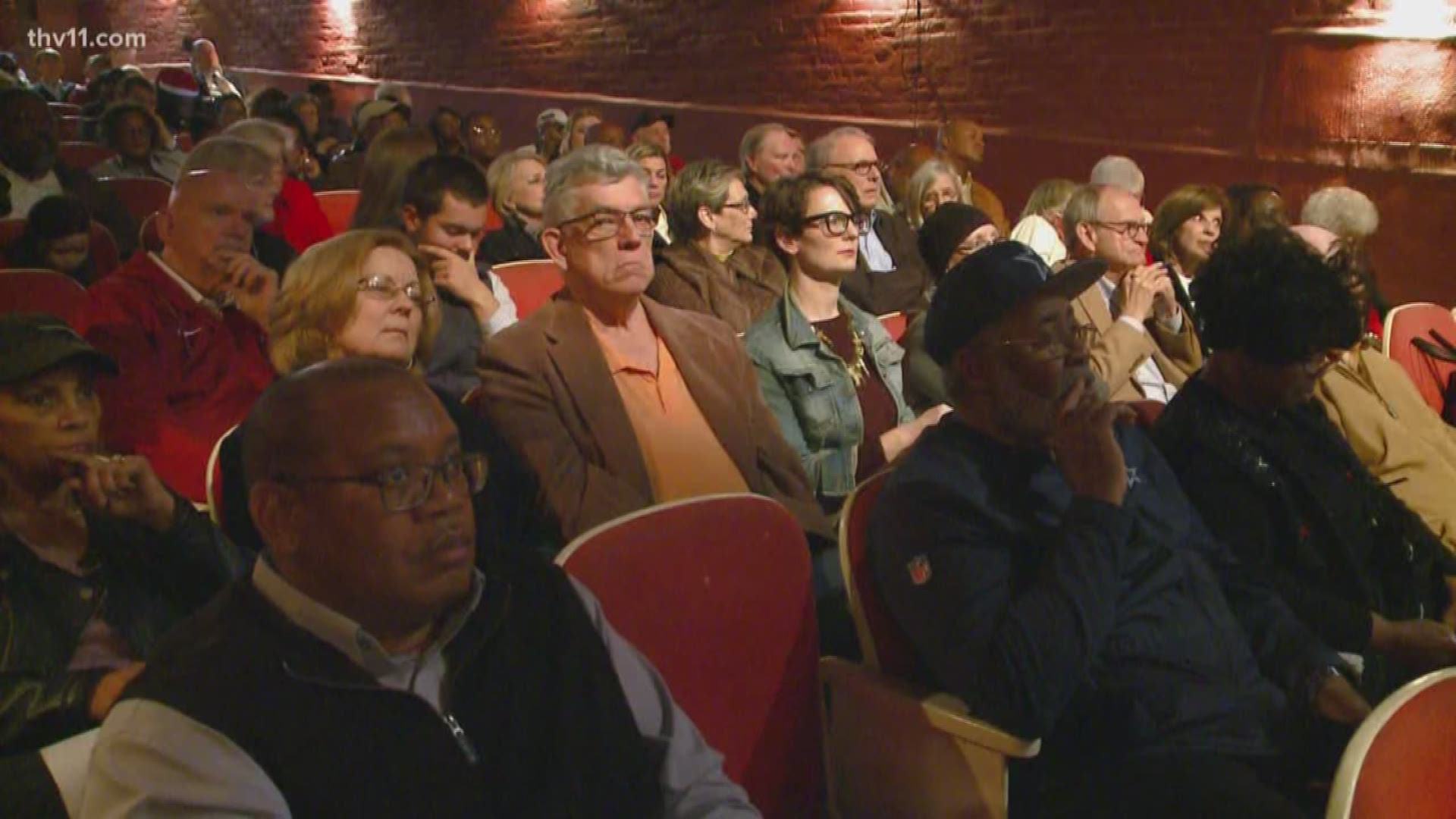The partnership between the City of Pine Bluff and Go Forward Pine Bluff unveiled the downtown master plan and vision that is expected to attract residents and business into downtown.
The plan entitled Re-Live Downtown Pine Bluff was designed and presented by internationally renown urban designer Steve Luoni, who is the Steven L. Anderson Chair in Architecture and Urban Studies and Director of the University of Arkansas Community Design Center.
Mayor Shirley Washington opened the evening by welcoming the capacity crowd to the renovated Community Theatre, followed by Ryan Watley who is CEO of GFPB. Watley characterized the night as “being a defining moment for the City of Pine Bluff as what will be presented offers a significant degree of clarity for what can be if we continue working together.”
Watley continued with stressing the importance that this master plan is a vision and can only come to fruition with continuous public and private investment over a period ranging between fourteen and twenty-one years. Upon being introduced, Luoni opened the presentation by reading comments from the listening sessions where citizens from Pine Bluff expressed what they wanted in their downtown.
Illustrated in the form of a word cloud, some of the citizens expressed the desire for downtown to have an arts and entertainment district, reinvestment in buildings, leverage rich history and culture within the area, amongst many other statements.
Mr. Luoni then reminded Pine Bluff citizens of their historic urban patterns that created a great downtown. He then cited a study done in the year 1899 by the famous American sociologist, historian and civil rights activist W.E.B Du Bois which concludes Pine Bluff had the fourth highest level of black wealth nationwide behind Charleston, SC, Richmond, VA, and New York City. Luoni began to exclaim that as a downtown goes, so goes the city; and that a successful downtown requires population density and mixed-use development.
The presentation then highlighted the contrast between Pine Bluff’s original downtown housing stock in 1918 and 2018. He pointed out the stark contrast in the density of seven housing units per acre in 1918 (makes streetcars and public transit viable) compared to 0.75 units per acre in 201, which is considered to be a rural density. The unveiling then transitioned to underline the need for a contemporary mixture of missing middle housing. The plan provides a pallet of 28 walk-up housing types for all income groups.
Complimenting the residentialization of downtown are development of signature projects which include an art walk celebrating the delta’s music heritage, a new theatre row on 2nd avenue that features a new cinema and café, an expanded waterfront offering new amenities particularly the floating lawn and lastly the downtown bandstand.
These projects complement the proposed downtown neighborhoods and ultimately respond to the citizens of Pine Bluff’s desire for cultural content, entertainment and recreation. Importantly, the unique placemaking features are connected through enhanced streetscapes with a bicycle network.
According to Maurice Taggart who is the Executive Director of the local Urban Renewal Agency, “the partnerships forged over the last year to bring this plan to fruition is an attestation to the power of what we can accomplish. The property incentive programs currently being developed by our agency will work to spur the investments required to realize neighborhood and business development. As Executive Director, I am committed to assist in the restoration of downtown Pine Bluff.”
Mayor Washington added “This plan will be the blueprint Pine Bluff needs to breathe life into our downtown area, as it embraces our city’s past and its bright future. The mixed use design will draw the foot traffic and the commercial business necessary to develop a thriving urban neighborhood. I truly believe these improvements will make Pine Bluff a destination city by providing opportunities for our young people and seniors alike. People will be attracted to Pine Bluff as they see the work advance through the phases of development.”
The entire plan can be downloaded here.

